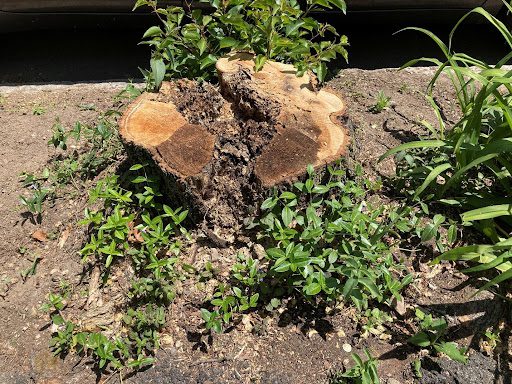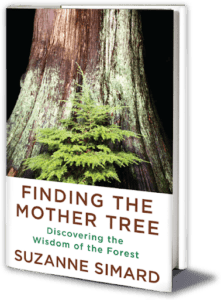Stepping into Summer with the Trees
It’s early summer. I am reveling in the longer days. Solstice is Wednesday, June 21st at 10:57 AM. From there, the days start getting shorter and our hemisphere soaks up the sun.
Last winter was mild. We didn’t have much snow. We had one two-day very-cold snap, but otherwise, my thicker winter coat gathered dust this year. The average temperature for 2023 is on the way to being higher than normal due to the mild winter.
Will we have heat spells this year? You might have some willful amnesia; do you remember the hot spell last summer? It was very hot, very humid for over a week in the first half of August. It was miserable. People were advised to stay inside. Events were cancelled. It was no fun for many, and a health hazard for some.
Trees are cool
 This spring, we experienced a sea change in the small area that we call a yard. We had a Norway Maple tree in front of our house until this May. It was sick and was cut down. It is an invasive plant. It was trying to turn our front yard into a Norway Maple forest. Its roots hogged the water under our plantings. Our plants are celebrating the full sunlight and less competition for water. It’s only June and some are twice as high as they were last year, some a quarter or so higher.
This spring, we experienced a sea change in the small area that we call a yard. We had a Norway Maple tree in front of our house until this May. It was sick and was cut down. It is an invasive plant. It was trying to turn our front yard into a Norway Maple forest. Its roots hogged the water under our plantings. Our plants are celebrating the full sunlight and less competition for water. It’s only June and some are twice as high as they were last year, some a quarter or so higher.
With my attention turned to trees, I recently read The Hidden Life of Trees. It is a translated work by a German forester. From the outset, he gets his audience thinking like a tree. Other scientists say that some of his anthropomorphizing is nonsense, but I found it an interesting read.
Trees have complicated structures underground, where they share water and nutrients. Because they grow so slowly, they grow up in the shadow of their elders. If they grow to grab better light, they lose out on structural strength. Depending on what happens around them, the fast growth might lead to their existence as the tallest tree in the area, or it can cause them to blow over if they lose their wind-buffering neighbors. What instinct drives them? Are they thinking?
The real take-away for me has been a greater determination to get off my butt and do more forest walking. Some of the best things that humans can do in the summer can be done around trees. It is fairly easy to find tree-covered areas in and around Boston. They are cooler than surrounding concrete and asphalt surfaced areas.
Getting out and walking or riding along a community path demonstrates how hot it can be in the direct sun, and how much cooler it is when there is tree cover. Forests provide more than just shade. Forested areas provide so much more. Under trees, the air has a higher level of oxygen. Under trees, the air has tree-created chemicals used by the trees to fight infections. People seem to benefit from them, too. Forest walking contributes to better immune function for both fighting infections and resisting cancer. [USDA Forest Service]
There are other health benefits from walking in forests. Among them better concentration, lower blood pressure and lower blood sugar. [Forest Therapy Association of the Americas] But, especially in summer, being out in the shade is better than being out in the full sunlight.
 Next up, I am reading another book by a plant scientist, Suzanne Simard. I have already found that it is a less entertaining book than The Hidden Life of Trees. I am hoping that the science has fewer flights of fancy about what trees think or don’t think. I am interested in how they act and what their actions mean to the ecosystem and human life. She writes about the way trees communicate and how they function cooperatively for the good of one another.
Next up, I am reading another book by a plant scientist, Suzanne Simard. I have already found that it is a less entertaining book than The Hidden Life of Trees. I am hoping that the science has fewer flights of fancy about what trees think or don’t think. I am interested in how they act and what their actions mean to the ecosystem and human life. She writes about the way trees communicate and how they function cooperatively for the good of one another.